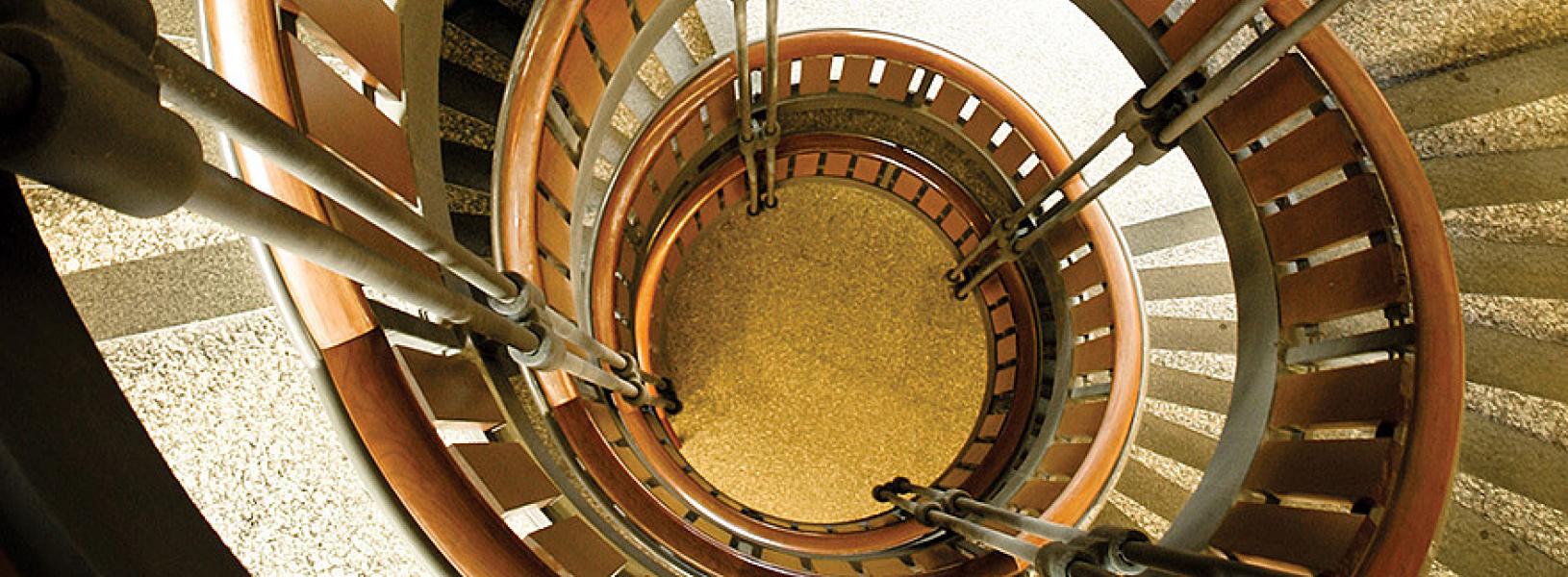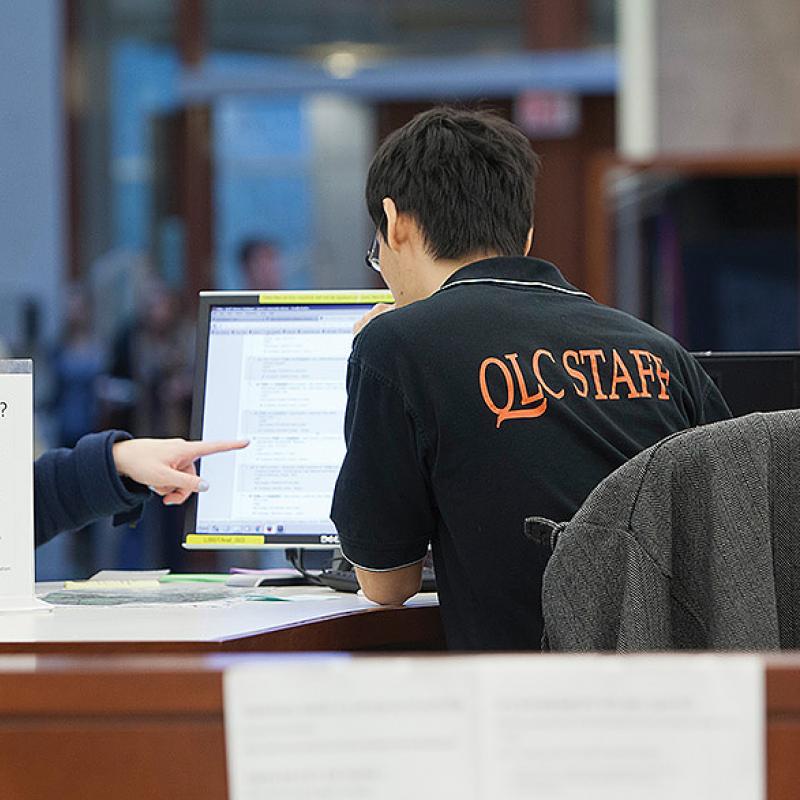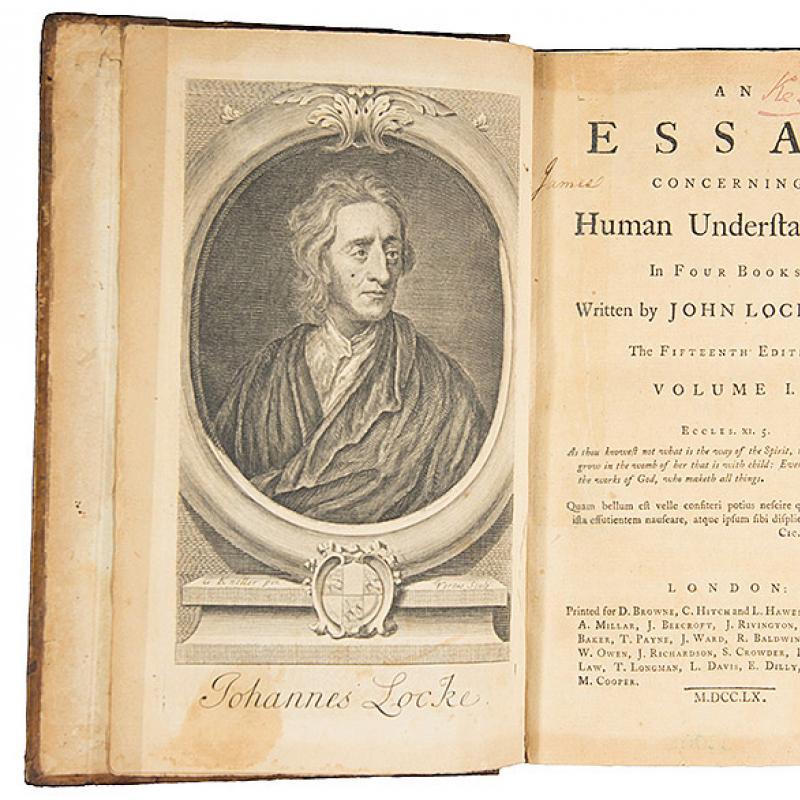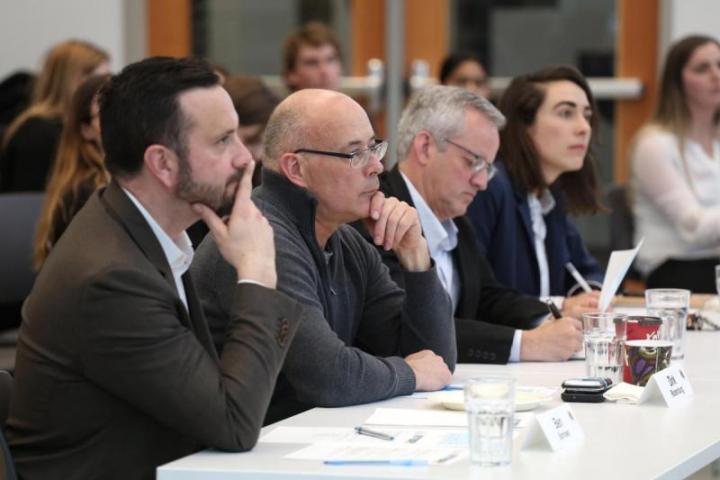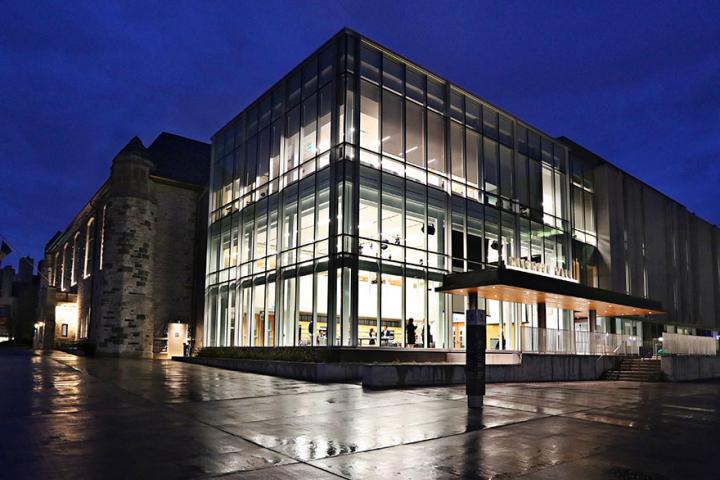Queen’s University had a fledging library before it had students, buildings, or even teachers. In 1840, Judge James Mitchell made a donation of six volumes to the new institution. Now known collectively as the Mitchell Gift, these volumes were: a Latin Bible (1592), a Greek New Testament (1760), a French New Testament (1664), a Greek Lexicon (1821) and a 1760 two-volume set of John Locke’s Essay Concerning Human Understanding.
This was a full year before Queen’s College was formed by Royal Charter and nearly two years before two professors and 13 students came together for Queen’s University’s first class.
These days the Mitchell Gift is housed in the Queen’s Library’s special collections, no longer used for everyday classes. Other rare volumes held at Queen’s, however, are still part of modern student learning, such as the 1543 first edition of De humani corporis fabrica by early anatomist Andreas Vesalius. Medical students study the work as part of a course on the history of medicine. Still others are much sought after by researchers who travel to Kingston to consult resources such as the private library of author John Buchan (Governor General of Canada, 1935 – 1940).
Speaking of the rich resources held in archives and special collections, Martha Whitehead, Vice-Provost and University Librarian, says, “We want our learners to be excited by these treasures, and to engage with them. This library is their world, and as they navigate through it, we want them to feel a sense of welcome, and that we will help them explore the many paths of research.”
In its early years, one of the library’s main focuses was on expanding collections. It was so much a priority that it is said the Rev. William Snodgrass, Queen’s sixth principal (1864 – 1877) did not stop at soliciting donations of books from friends, family and Canadian authors, but “occasionally carried home more than was given,” according to Volume I of the Queen’s history (And Not To Yield by Hilda Neatby).
This early emphasis on amassing physical resources has shifted, over the years, toward a focus on discoverability, the ability to uncover the existence of information. This includes not only the books and e-journals the library has collected, but information produced around the globe. Library staff help researchers navigate the ever-expanding world of information to discover what information exists, wherever it is, and how to acquire it.
The structure of the modern Queen’s library is based on the notion that anyone in the library is able to help a member of the Queen’s community get started on their research question.
“The research journey starts with one question and leads to many more, and we have people to assist at different stages along the way,” Whitehead says. “We want everybody to come to us as the place that can help them run with an idea, even if they don’t know where to get started. We are here to help them learn how to explore different paths, and become even better inquirers.”
The library’s support for research does not end with inquiry. Throughout the research lifecycle, the library offers services: helping to guide data management and publication decisions, and tracking the impact of research findings. The Copyright Advisory Office within the library provides copyright and intellectual property information and services, as well as practical copyright guidelines for instructors and students.
Queen’s University Archives staff are also responsible for conservation, and sometimes restoration, of the holdings. Students in the Queen’s Master of Art Conservation program also take on conservation projects with the archives every year.
In 2015, the archives was contacted by the Yorktown-Mt. Pleasant Township Historical Alliance in Indiana, which had an item in its collection that, its staff felt, belonged at Queen’s. Their gift was the 1856 – 1865 official ledger of Thomas Burrowes, Justice of the Peace and postmaster at Kingston Mills from 1846 until his death in 1866. The ledger contains a detailed record of cases (names, offences, sentencing and other pertinent details). The volume is a great source of information for a variety of researchers: genealogists; social, economic and legal historians; sociologists; and historical geographers.
When conservator Margaret Bignell began work on the Burrowes ledger, she discovered another interesting document within its pages: an 1841 hand-drawn survey map, documenting the Rideau Canal and surrounding region between Kingston and Lake Opinicon (Chaffey’s Locks). Bignell restored the faded, delicate drawing to its original splendour. The map is a significant document in the ongoing study of the Rideau Canal, especially now that it is a UNESCO World Heritage site.
Archivists also influence the learning environment at Queen’s. This past year, they helped develop two internships with the Department of History. History 501 and 502 give course credit to students conducting archival work in collaboration with archives staff. [Learn more in “Hands-on history.”]
A legacy of revered learning spaces
A volume from the Mitchell Gift
In 1841, the library’s initial collection was housed in the tower of St. Andrew’s Presbyterian Church. By the 1870s, the library operated out of the old medical building, with no indoor access. The Queen’s Journal described chilly winter line-ups and a librarian, bundled up like “a sort of library Santa Claus” handing out frigid books. In 1880, the collections moved again, to Theological Hall, where Dr. George Bell, librarian and registrar, maintained a “death-like silence” in the new reading room, again, according to the Journal.
By 1924, the notion of the library as a community place had become central to Queen’s. Douglas Library, the first purpose-built library building on campus, opened in that year. Contrary to campus legend, the building was not constructed backwards. Despite a striking “back entrance,” blueprints in the archives confirm that neither entrance was designated the main entrance. The elaborate east side of the building would have been the most frequently used entrance on account of the layout of campus in the 1920s.
Seventy years later, the Joseph S. Stauffer Library was built, opening in 1994 and winning the Governor General’s Award for Architecture in 1997. In this same period, the library won an innovation award from the Canadian Association of College and University Libraries in recognition of its leadership in providing services and resources to students with disabilities.
Today, Queen’s students and researchers can connect electronically to library resources anytime, anywhere. And they still frequent the libraries on campus. Library spaces are campus hubs with inviting, accessible learning spaces. Cozy library locations include the Alan G. Green Fireplace Reading Room in Stauffer Library, and the 1923 and 1966 wing reading rooms in Douglas Library. Students can find silent library space to concentrate deeply on their studies, as well as places where collaboration is encouraged.
Queen’s Learning Commons (QLC) supports students as they develop inquiry, communication and teaching skills. Aside from service and workshop delivery, QLC also hosts events such as a weekly “Material Matters” graduate student discussion group, which provides a forum for interdisciplinary graduate research. This group started as a small project out of the Department of Geography: it has been so successful, a sister group is now being set up at the University of Toronto.
A tradition of dedicated people and services
In the 1840s, the library was open for approximately one hour a day. By 1889, the stacks remained closed to students who were permitted to borrow no more than two books at a time (In fact, if they had two books out, they were not permitted to consult reference materials on site). But this didn’t imply a lack of dedication on the part of library staff to their clientele. Back in 1895, Adam Shortt, the professor in charge of the library, returned from a visit to the Harvard library inspired, and single-handedly produced the first card catalogue for Queen’s, making the library’s resources much easier to find for users.
Today, undergraduates may borrow up to 100 items at a time and there are no limits for graduate students, faculty and staff. Stauffer Library is open 24/ 7 during exams, with a 2 am closing most other days in winter season. Queen's alumni, community borrowers and St. Lawrence College students all may obtain borrowing privileges, and they make regular use of the material at the library and archives.
Researchers from around the world visit the archives, in person and online, to view the genealogical collections. Parts of the Dr. H.C. Burleigh fonds, which contains genealogical research on more than 1,000 families with roots in the Kingston area, have now been digitized for online access. And sometimes the materials in the archives do the travelling. For example, several items from the fonds of John Alexander (Alex) Edmison, a key figure in the United Nations Relief and Rehabilitation Administration during and after the Second World War, have been used in exhibits at the Canadian War Museum in Ottawa and the Montreal Holocaust Memorial Centre.
An evolving future
From six little books to a portal to the world of information, the Queen’s Library has seen immense changes in the last 175 years. The library remains a guardian of traditions, heritage and history while facilitating teaching, learning and discovery in a changing world. Anticipating ongoing change, the Library and Archives Master Plan (LAMP) was developed in 2013 with input of the Queen’s community, and since then has been guiding the way forward. As Whitehead says, “Our students, staff, faculty and alumni own the library; it is theirs, and so it adapts to their needs.” Learn more about LAMP.
